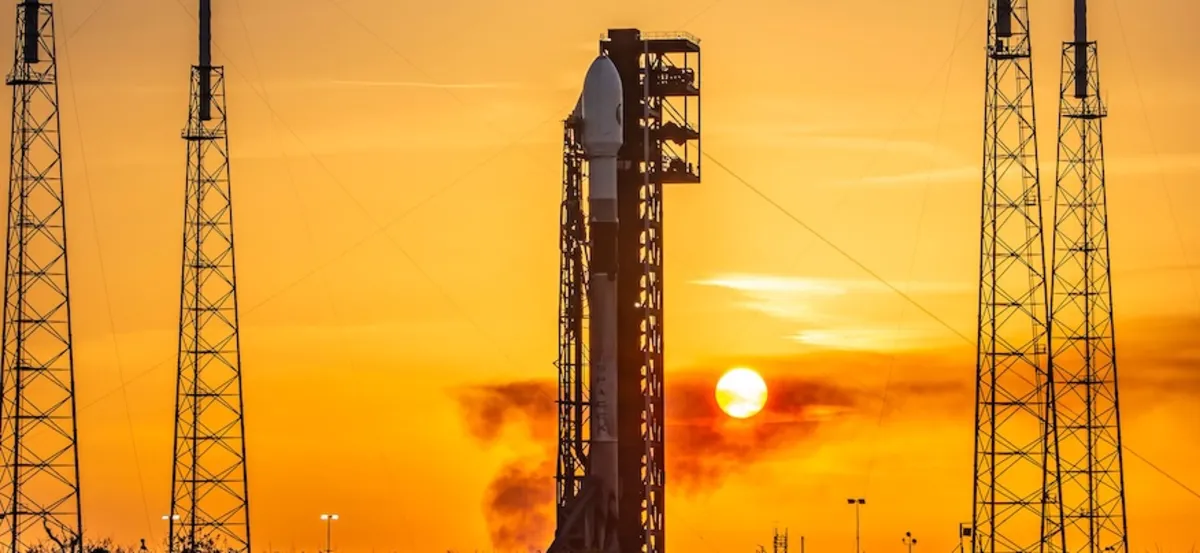
The National Reconnaissance Office (NRO), responsible for managing the United States military’s spy satellites, is gearing up for an important milestone as it prepares to launch its fifth mission of 2025. This flight, known as NROL-69, will be executed aboard a SpaceX Falcon 9 rocket and aims to reach an undisclosed orbital location. The launch is scheduled for 1:48 p.m. EDT (1748 UTC) from Space Launch Complex 40 at Cape Canaveral Space Force Station.
According to the 45th Weather Squadron stationed at Patrick Space Force Base, there is a promising 90 percent chance of favorable weather conditions for the liftoff. Meteorologists have indicated that the primary concern will be the presence of thick clouds. They noted, “Mid and high clouds associated with the upper-level jet will be streaming across the area on Monday, along with additional clouds from the approaching system.” The weather outlook suggests that while most clouds will remain too high to pose a significant threat, there is a slight possibility of lower clouds entering the launch window.
For this mission, SpaceX will utilize the Falcon 9 first stage booster designated as B1092. This marks only the second flight for this particular booster, which previously launched the Starlink 12-13 flight on February 27, 2025. Approximately 8.5 minutes after liftoff, B1092 is expected to attempt a landing back at Landing Zone 1. If the landing is successful, it will mark the 50th touchdown at LZ-1, contributing to a total of 422 booster landings to date.
In August 2020, SpaceX and United Launch Alliance (ULA) were awarded contracts worth $3.3 billion and $3.4 billion, respectively, as part of Phase 2 of the National Security Space Launch (NSSL) program. Initially announced in May 2019, the contracts were anticipated to cover a total of 34 missions. By the end of the fifth and final order year (FY24), the number of missions had escalated to 50, leading to an adjustment of the contract value to $4.5 billion for ULA and $4 billion for SpaceX.
Among the 50 awarded missions, nine are designated for the NRO, with ULA set to launch seven and SpaceX responsible for two. NROL-69 is one of the two missions assigned to SpaceX during the second year of task orders, issued in March 2021. The firm-fixed-price contract for both NROL-69 and USSF-36 was valued at approximately $159.7 million. While NROL-69 was originally slated for launch in the fourth quarter of FY23, the reasons for the delays remain undisclosed.
The NRO typically maintains a level of confidentiality regarding the specifics of its missions, including final orbits, payload details, and operational lifetimes. However, in a pre-launch press kit, the agency stated, “This mission carries a national security payload designed, built, and operated by NRO.” Notices to aviators and mariners suggest that the Falcon 9 rocket will follow a northeast trajectory, likely targeting an initial orbit with an inclination of approximately 53 degrees.
The Falcon 9 rocket includes a distinctive grey band wrapped around its second stage, typically used to maintain the temperature of RP-1 kerosene, the rocket’s propellant, during extended coast phases. This feature was notably utilized during the June 2024 Falcon Heavy launch of the GOES-U satellite for the National Oceanic and Atmospheric Administration, which required multiple burns of the Merlin vacuum engine before payload deployment.
SpaceX has not extensively discussed the significance of the grey stripe, but it was briefly mentioned by Ronnie Foreman, a SpaceX commercial sales manager, during the launch of the Jupiter-3 mission on July 28, 2023. Foreman explained that this medium-coast configuration enhances performance for certain missions and includes extra hardware to ensure the fuel systems operate effectively for the duration of the flight.
As the countdown to NROL-69 continues, the collaboration between the NRO, SpaceX, and ULA exemplifies the ongoing advancements in national security and space exploration.